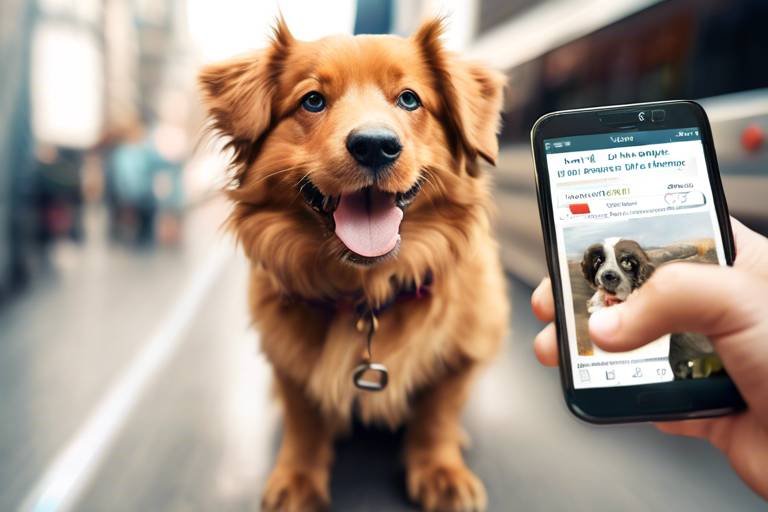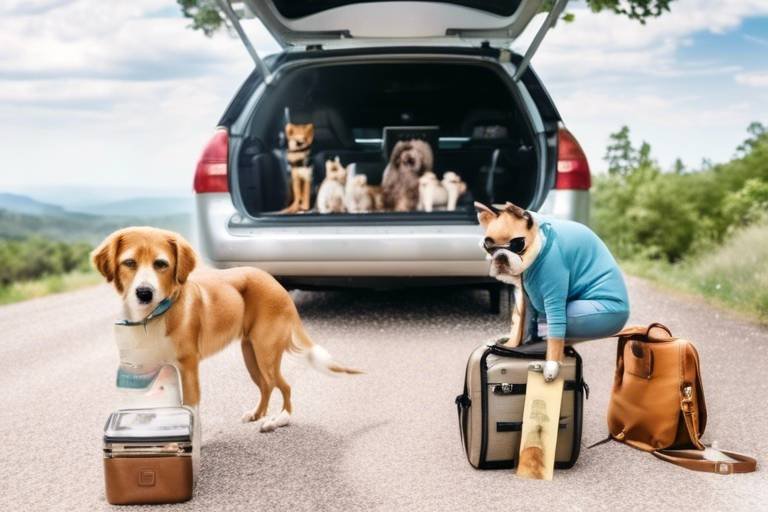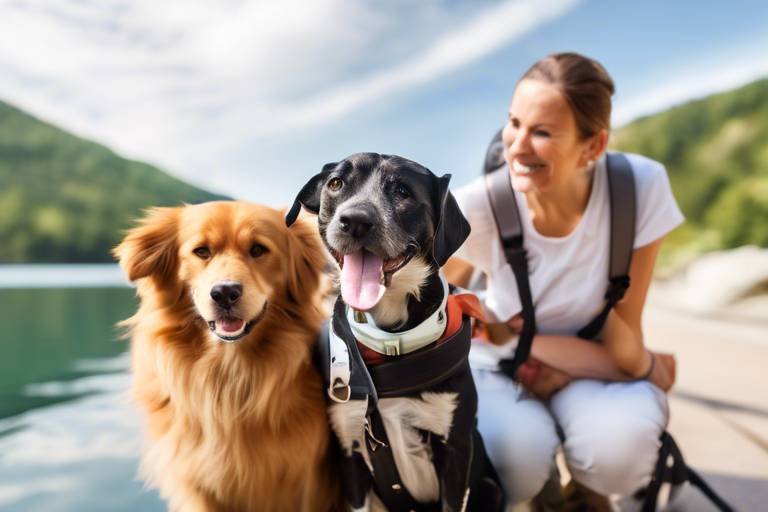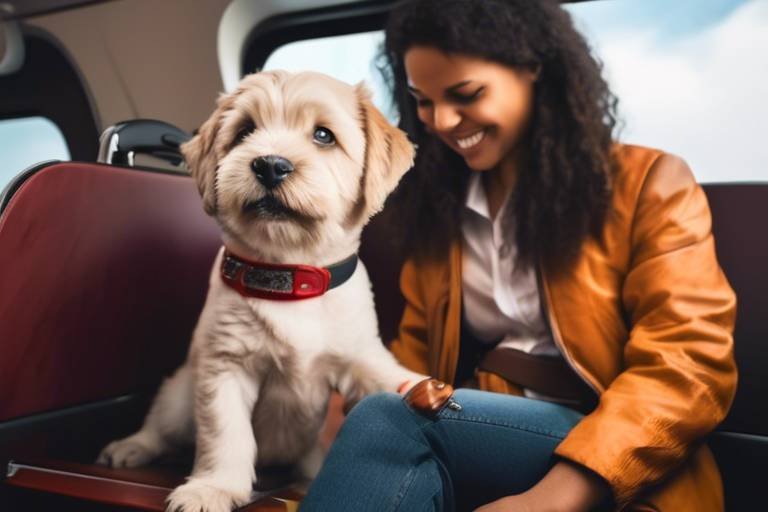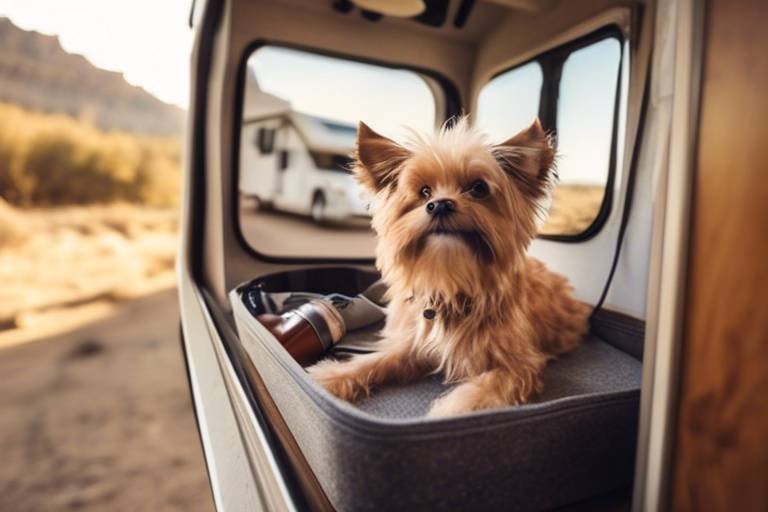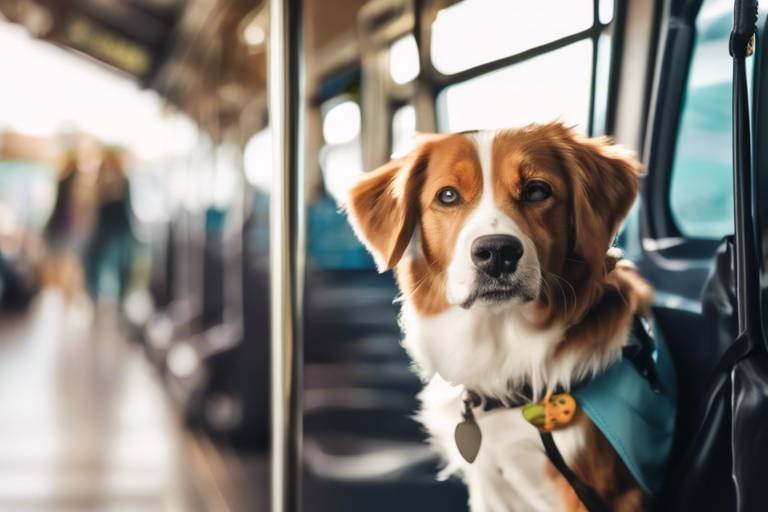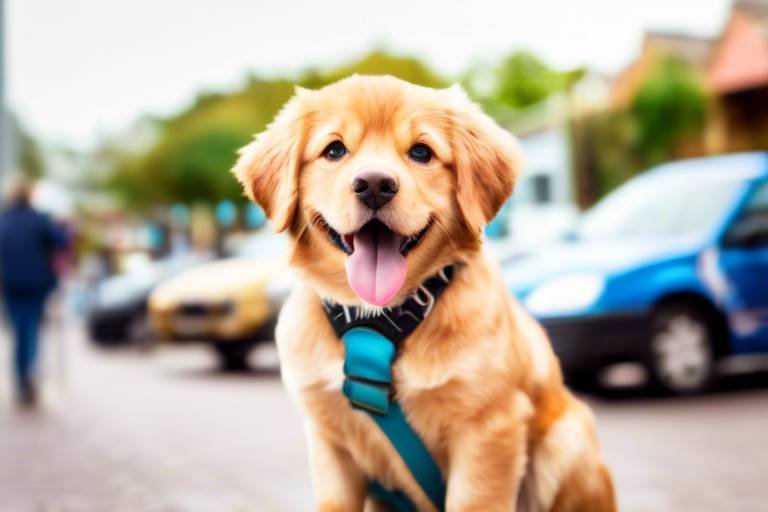How to Handle Pet Behavior Issues on the Road
Traveling with pets can be an exhilarating adventure, but it can also come with its fair share of challenges. Just like us, our furry friends can experience a range of emotions when they are taken out of their comfort zones. From the excitement of new sights and smells to the stress of confinement and unfamiliar surroundings, pets can exhibit a variety of behaviors while on the road. Understanding how to handle these pet behavior issues is crucial for ensuring a smooth and enjoyable journey for both you and your beloved companion.
In this article, we will explore effective strategies for managing pet behavior during travel. We will cover everything from preparation and training to addressing common challenges such as anxiety, aggression, and restlessness. Whether you're embarking on a long road trip or a short getaway, being equipped with the right knowledge can make all the difference. So buckle up, and let's dive into the world of pet travel!
Before hitting the road, it's essential to recognize the typical behavior problems that can arise during travel. By identifying these issues ahead of time, you can prepare and mitigate potential challenges. Some common behavior problems include:
- Anxiety: Many pets feel anxious when traveling, especially if they are not accustomed to being in a car or in new environments.
- Aggression: Stressful situations can lead to aggressive behavior, particularly if your pet feels threatened or cornered.
- Restlessness: Pets may become restless during long journeys, leading to excessive barking, whining, or attempts to escape.
Understanding these behaviors is the first step in addressing them effectively. For instance, if your pet tends to get anxious, you can implement calming techniques or products to ease their stress. Similarly, if aggression is a concern, recognizing triggers and managing the environment can help keep everyone safe.
Preparation is key to a successful trip with your pet. The more acclimated your pet is to the travel environment, the smoother your journey will be. Start by introducing your pet to the car and taking short drives to help them get used to the motion and sounds. Establish a comfortable routine before you hit the road. This might include feeding them at regular intervals and ensuring they have a familiar blanket or toy to provide comfort during the journey.
A safe travel environment is crucial for your pet's well-being. When traveling, make sure your pet is securely restrained in the vehicle. This can be done using a pet seatbelt, a travel harness, or a secured crate. Not only does this ensure your pet's safety, but it also minimizes distractions for the driver. A distracted driver can lead to accidents, so it's essential to keep your furry friend calm and secure.
Selecting an appropriate crate or carrier can significantly impact your pet's comfort. Look for options that are well-ventilated, spacious enough for your pet to stand and turn around, and easy to secure in your vehicle. Introduce your pet to their travel space gradually, allowing them to explore and feel comfortable before the journey begins.
Having the right supplies can make traveling easier. Here are some must-have items to ensure your pet's needs are met on the road:
- Food and Water: Bring enough food and a portable water bowl to keep your pet hydrated and fed.
- First Aid Kit: A basic first aid kit can come in handy in case of minor injuries.
- Comfort Items: Familiar toys or blankets can help soothe your pet during travel.
- Waste Bags: Always be prepared for bathroom breaks with waste bags for clean-up.
By being prepared with the right supplies and creating a safe environment, you can significantly reduce the chances of encountering behavior issues on the road.
Training your pet in advance can prevent many behavior issues from arising. Basic commands such as "sit," "stay," and "down" can be invaluable during travel, helping you maintain control in unfamiliar situations. Additionally, desensitization techniques can help your pet become accustomed to the travel experience. Gradually exposing them to the car, the crate, and various travel scenarios can build their confidence and reduce anxiety.
Travel can induce anxiety in many pets. Understanding how to manage this anxiety effectively is essential for a pleasant journey. Recognizing signs of anxiety early can help you intervene before the situation escalates. Common signs include excessive panting, whining, pacing, or hiding.
There are various methods and products available to help calm anxious pets. Natural remedies like calming treats, pheromone sprays, and even soothing music can create a more relaxing environment. In some cases, consulting with a veterinarian about medication may be necessary for particularly anxious pets. Remember, a calm pet leads to a more enjoyable travel experience!
Aggression can pose serious risks during travel. Recognizing triggers for aggression is vital to managing your pet's behavior effectively. Common stimuli that provoke aggressive reactions may include loud noises, unfamiliar people, or sudden movements. By being aware of these triggers, you can take preventive measures to create a calmer travel experience.
Taking preventive measures can help reduce the likelihood of aggression. Training techniques such as positive reinforcement can encourage good behavior, while environmental adjustments like keeping your pet in a confined space during stressful situations can help. Remember, patience and understanding are key when dealing with aggressive behavior.
Q: How can I tell if my pet is anxious during travel?
A: Look for signs such as excessive panting, hiding, whining, or pacing. If your pet seems restless or uncomfortable, they may be experiencing anxiety.
Q: What should I do if my pet becomes aggressive while traveling?
A: If your pet shows signs of aggression, try to remove them from the stressful situation if possible. Use calming techniques or products and consult with a veterinarian for further advice.
Q: Are there any specific products that can help with pet anxiety during travel?
A: Yes! There are various products available, including calming treats, pheromone diffusers, and anxiety wraps. Consult your veterinarian for recommendations tailored to your pet's needs.

Understanding Common Pet Behavior Issues
When it comes to traveling with our furry friends, understanding their behavior is key to ensuring a smooth journey. Pets, just like humans, can experience a range of emotions and reactions when faced with the unfamiliar sights, sounds, and smells of travel. One of the most common issues is anxiety. Many pets feel stressed when they're away from their familiar environment, which can lead to excessive barking, whining, or even destructive behavior. Imagine how you might feel if you were suddenly whisked away from your cozy home to a bustling city—it's no wonder our pets might react similarly!
Another behavior that can rear its head during travel is aggression. This might manifest as growling, snapping, or lunging at other pets or people. It's crucial to recognize that these behaviors often stem from fear or discomfort rather than a desire to be hostile. For instance, if a dog feels cornered in a new environment, it may resort to aggressive behavior as a defense mechanism. Understanding these triggers can help you manage your pet's reactions more effectively.
Lastly, restlessness is a common issue that many pet owners encounter on the road. Pets may become restless due to confinement in a crate or car for extended periods, leading to pacing, whining, or attempting to escape. Just like a child who’s been in the backseat for too long, pets need to stretch their legs and explore their surroundings. By recognizing these common behavior issues, pet owners can take proactive steps to address them before they escalate into more serious problems.
In summary, being aware of these typical pet behavior issues—anxiety, aggression, and restlessness—can help you prepare for a more enjoyable travel experience. The next sections will delve deeper into how to prepare your pet for travel and mitigate these challenges effectively.

Preparing Your Pet for Travel
Traveling with your pet can be an exhilarating experience, but it requires some thoughtful preparation to ensure that both you and your furry friend have a smooth journey. Imagine embarking on a road trip without any hiccups, where your pet is calm, comfortable, and ready to explore new places with you. The key to achieving this lies in proper preparation. Start by acclimating your pet to the travel environment well before the departure date. This means taking them on short car rides to help them get used to the motion and sounds of the vehicle. You can gradually increase the duration of these rides, making it a fun adventure rather than a stressful experience.
Establishing a comfortable routine is also essential. Just like humans, pets thrive on predictability. Before your trip, try to maintain their feeding and exercise schedule as closely as possible to their normal routine. This can help reduce anxiety and make your pet feel more secure. Additionally, consider their comfort during the journey. A familiar blanket or toy can provide a sense of security. You might even want to create a travel kit that includes their favorite items, ensuring that they feel at home, even in a moving vehicle.
Safety is paramount when traveling with pets. You wouldn’t drive without your seatbelt, right? Similarly, your pet needs to be secured in the vehicle to prevent any distractions for the driver. A well-secured pet is not only safer but also less likely to become anxious or restless during the trip. Depending on your pet's size and temperament, you can choose from various options like a pet seatbelt, a travel harness, or a secure crate. Each option has its pros and cons, but the goal is to ensure that your pet is comfortable yet secure.
Selecting the right crate or carrier is crucial for your pet's comfort during travel. A well-ventilated, spacious crate can provide a safe haven for your pet on the road. When choosing a crate, consider factors like size, material, and ease of use. For instance, a soft-sided carrier might be suitable for smaller pets, while larger dogs may require a sturdy, hard-sided crate. It's important to introduce your pet to their travel space well in advance. Allow them to explore the crate or carrier at home, perhaps by placing treats inside to create a positive association.
Having the right supplies can make your journey smoother and more enjoyable. Here’s a quick rundown of must-have items to include in your travel kit:
- Food and Water: Bring enough food for the duration of the trip, plus some extra in case of delays. A portable water bowl is also essential to keep your pet hydrated.
- Leash and Collar: Always have a sturdy leash and collar on hand for bathroom breaks or when you stop at pet-friendly locations.
- Medical Records: Keep a copy of your pet’s vaccination records, especially if you’re traveling across state lines.
- First Aid Kit: A basic pet first aid kit can be a lifesaver in case of minor injuries.
- Comfort Items: Don’t forget a favorite toy or blanket to help soothe your pet during the journey.
By preparing your pet for travel thoughtfully, you can avoid many common issues that arise on the road. Remember, a little planning goes a long way in ensuring a happy and stress-free adventure for both you and your furry companion!
Q: How can I help my pet adjust to travel?
A: Start with short car rides to help them get used to being in the vehicle. Gradually increase the duration while maintaining a calm environment.
Q: What should I do if my pet shows signs of anxiety while traveling?
A: Recognize the signs of anxiety, such as excessive barking or whining, and use calming techniques like gentle petting or soothing music.
Q: Is it safe for my pet to travel in a crate?
A: Yes, as long as the crate is secure and properly sized. It provides a safe space for your pet during the journey.
Q: What are the essential supplies I should take for my pet?
A: Ensure you have food, water, a leash, medical records, a first aid kit, and comfort items like toys or blankets.
Creating a Safe Travel Environment
When it comes to traveling with your furry friends, ensuring a safe travel environment is paramount. Imagine your pet's anxiety as a balloon; if you don't manage it properly, it could pop at any moment! The car can be a chaotic space, filled with unfamiliar sights and sounds, which can be overwhelming for your pet. To avoid any unfortunate incidents, it's essential to secure your pet properly in the vehicle. This not only keeps them safe but also allows you to focus on the road without distractions.
One of the most effective ways to create a secure space is by using a well-fitted crate or carrier. This acts as a familiar sanctuary for your pet, making them feel more at ease during the journey. When selecting a crate, ensure that it's appropriate for your pet's size—there should be enough room for them to stand, turn around, and lie down comfortably. Additionally, you can introduce your pet to their crate before the trip. Leave the crate open at home, allowing them to explore and associate it with positive experiences. You can even reward them with treats when they go inside, creating a safe haven that they look forward to using.
Another critical aspect of a safe travel environment is minimizing distractions. You wouldn't drive with loud music blaring, right? Similarly, you should avoid allowing your pet to roam freely while you're driving. This can lead to dangerous situations, such as your pet jumping into your lap or obstructing your view. Instead, keep them securely in their crate or use a pet seatbelt harness. Not only does this protect your pet, but it also ensures that you can maintain your focus on the road. Always remember to keep your pet's head inside the vehicle—an excited pup can easily get into trouble if they stick their head out the window.
Lastly, consider the temperature inside your vehicle. Just like humans, pets can suffer from heatstroke. Make sure your car is well-ventilated and that your pet has access to water throughout the journey. If you're traveling long distances, plan for regular breaks to let your pet stretch their legs and relieve themselves. A quick stop can make all the difference in keeping your pet calm and comfortable.
| Safety Tips for Traveling with Pets |
|---|
| Use a secure crate or carrier |
| Keep your pet restrained with a seatbelt or harness |
| Avoid distractions while driving |
| Monitor the temperature inside the vehicle |
| Plan for regular breaks during long trips |
By following these guidelines, you can create a safe travel environment that not only protects your pet but also enhances the overall travel experience. Remember, a little preparation goes a long way in ensuring both you and your pet enjoy the journey ahead!
- What should I do if my pet gets anxious during travel? Consider using calming techniques such as soothing music or anxiety-reducing products.
- Is it safe to let my pet stick their head out the window? No, it's best to keep your pet inside the vehicle to avoid accidents.
- How often should I take breaks during long trips? Plan for breaks every 2-3 hours to allow your pet to stretch and relieve themselves.
Choosing the Right Crate or Carrier
When it comes to traveling with your furry friend, one of the most crucial decisions you'll make is choosing the right crate or carrier. This choice can significantly impact your pet's comfort and safety during the journey. Think of it like picking the perfect suitcase for a trip; it needs to be the right size, sturdy, and easy to handle. So, how do you ensure you're making the best choice for your pet?
First and foremost, consider the size of the crate or carrier. It should be spacious enough for your pet to stand up, turn around, and lie down comfortably. A cramped space can lead to stress and anxiety, making the journey less enjoyable for both of you. To find the right size, measure your pet from the tip of their nose to the base of their tail, and from the ground to the top of their head when standing. This will give you a good idea of the dimensions you need.
Next, think about the material of the crate or carrier. There are various options available, including plastic, metal, and soft-sided carriers. Each material has its own advantages:
- Plastic: Durable and easy to clean, plastic crates are great for car travel and can provide a sense of security for your pet.
- Metal: Ideal for larger pets, metal crates are sturdy and well-ventilated, but they can be heavy and less portable.
- Soft-sided: Lightweight and portable, soft-sided carriers are perfect for smaller pets and can easily fit under airplane seats.
Another important factor is the ventilation. Make sure the crate or carrier has adequate airflow to keep your pet comfortable. Look for designs that include mesh panels or multiple vents. This is especially important during warmer months when pets can overheat quickly.
Once you've chosen the right size and material, it’s time to introduce your pet to their new travel space. Start by allowing them to explore the crate at home. Place their favorite blanket or toy inside to create a sense of familiarity. You can also use treats to encourage them to enter the crate willingly. This process is similar to training a child to feel comfortable in a new environment; patience and positive reinforcement are key!
Lastly, don’t forget to check the safety features of the crate or carrier. Look for secure latches and sturdy construction to prevent any escape attempts. If you're traveling by car, ensure that the crate can be safely secured with seat belts or in a way that minimizes movement during transit. Think of it as buckling up your seatbelt; it’s all about keeping your loved ones safe!
In summary, choosing the right crate or carrier is essential for a smooth travel experience with your pet. By considering size, material, ventilation, and safety features, you can create a comfortable and secure environment for your furry companion. Remember, the goal is to make your pet feel as relaxed and safe as possible, so they can enjoy the journey just as much as you do!
Q: How do I know what size crate to get for my pet?
A: Measure your pet's height and length when standing and lying down. The crate should allow them to stand, turn around, and lie down comfortably.
Q: Can I use a soft-sided carrier for my large dog?
A: Soft-sided carriers are typically best for small to medium-sized pets. For larger dogs, consider a sturdy plastic or metal crate.
Q: How can I make my pet comfortable in a crate during travel?
A: Introduce the crate at home, use familiar items like blankets or toys, and offer treats to create positive associations.
Q: Are there any safety concerns I should be aware of?
A: Ensure the crate has secure latches and is properly secured in the vehicle to prevent movement during travel.
Essential Travel Supplies for Pets
When embarking on a journey with your furry friend, packing the right supplies is crucial for ensuring their comfort and safety. Just like you'd never hit the road without your essentials, your pet deserves the same attention. Imagine setting off on a long drive without snacks or a cozy blanket—your pet feels the same way! So, what should you bring along? Here’s a breakdown of must-have items that will make your travels smoother and more enjoyable for both of you.
First and foremost, food and water are non-negotiable. Always pack enough of your pet's regular food to last the duration of your trip, plus a little extra just in case. You wouldn't want to run out of their favorite kibble while on the road! For hydration, a portable water bowl is essential. Look for one that’s spill-proof and easy to clean, so you can keep your pet hydrated without making a mess in the car.
Next up is a first-aid kit. Accidents can happen anywhere, and being prepared can make all the difference. A basic first-aid kit for pets should include items like antiseptic wipes, bandages, tweezers for splinters, and any medications your pet may need. You can either buy a pre-made kit or assemble your own—just ensure that it’s easily accessible during your travels.
Another important item is a comfortable bed or blanket. Just as you’d want a cozy spot to rest your head after a long day, your pet would appreciate a familiar and soft place to curl up. Bringing their favorite blanket or bed can help provide a sense of security and comfort, especially in unfamiliar environments.
Additionally, don’t forget about leashes and harnesses. Even if your pet is well-trained, having a sturdy leash is essential for bathroom breaks and walks during your journey. A harness can provide added security, especially for anxious pets who might be prone to bolting. It’s also a good idea to have a spare leash in case the first one gets lost or damaged.
Finally, consider packing some toys and treats to keep your pet entertained during long stretches of travel. Chew toys can help alleviate anxiety and boredom, while treats can be used as rewards for good behavior. Just remember to keep them in a secure bag to prevent any accidental spills or messes.
In summary, being well-prepared with essential travel supplies can make your journey much more enjoyable for both you and your pet. Here’s a quick recap of what you should pack:
| Essential Item | Purpose |
|---|---|
| Food | To keep your pet nourished |
| Water Bowl | To ensure hydration |
| First-Aid Kit | To handle any emergencies |
| Comfortable Bed/Blanket | To provide a sense of security |
| Leash and Harness | For safe bathroom breaks and walks |
| Toys and Treats | To keep your pet entertained |
By ensuring you have these essentials, you can focus on enjoying the adventure ahead, knowing your pet is comfortable and happy!
- What should I do if my pet gets anxious while traveling? Consider using calming products or techniques, and ensure they have a comfortable space in the vehicle.
- How can I prepare my pet for long car rides? Gradually acclimate them to the car by taking short trips and rewarding good behavior.
- Are there any specific items I should include in a pet first-aid kit? Yes, include antiseptic wipes, bandages, tweezers, and any necessary medications.
- What type of carrier is best for my pet? Choose a carrier that is well-ventilated, sturdy, and large enough for your pet to stand, turn around, and lie down comfortably.
Training Your Pet for Travel
Training your pet for travel is not just about teaching them to sit or stay; it's about preparing them for a whole new world of experiences that can be both thrilling and overwhelming. Imagine this: you’re in a car, the windows are down, and your furry friend is excitedly sniffing the fresh air. But wait! What happens when they start barking at every passing car or jumping around like a kangaroo? That’s where effective training comes into play. By investing time in training your pet before your trip, you can ensure a smoother, more enjoyable experience for both of you.
First things first, establishing basic commands is crucial. Commands like “sit,” “stay,” and “come” can be lifesavers when you’re on the road. For instance, if you need to stop at a rest area and let your pet out, having them sit calmly can prevent them from bolting into traffic. Start practicing these commands in a familiar environment before introducing them to the car. Gradually, you can incorporate travel scenarios into your training. Try taking short drives to a park or a friend's house, rewarding them for calm behavior during the ride.
Next, desensitization techniques are incredibly effective in helping pets adapt to the travel experience. This method involves gradually exposing your pet to the sights and sounds of travel without overwhelming them. You might begin by simply allowing your pet to explore the car while it’s parked. Let them sniff around, jump in and out, and get comfortable with the space. Once they seem relaxed, start the engine while they're inside, but keep the car stationary. This process can help them associate the car with positive experiences rather than anxiety.
Additionally, consider using positive reinforcement during training sessions. Offer treats or praise when your pet follows commands correctly or stays calm in the car. This not only builds their confidence but also strengthens the bond between you and your pet. Remember, patience is key! Some pets may take longer to adjust than others, and that’s perfectly okay.
Incorporating travel-related distractions can also be beneficial. Bring along their favorite toys or a blanket that smells like home. These familiar items can provide comfort and a sense of security during your journey. Moreover, you might want to practice car rides with these items, so they learn to associate them with fun and relaxation.
Lastly, don’t forget to monitor your pet’s progress. Keep an eye on how they react to different aspects of travel training. If you notice signs of stress or discomfort, take a step back and allow them more time to acclimate. Every pet is unique, and what works for one may not work for another. By being attentive and responsive to your pet's needs, you can set the stage for a successful travel experience.
In summary, training your pet for travel is a multifaceted process that involves teaching commands, using desensitization techniques, and providing positive reinforcement. By taking the time to prepare your furry friend for the journey ahead, you’ll not only enhance their travel experience but also create lasting memories together. So buckle up, hit the road, and enjoy the adventure!
- What age should I start training my pet for travel? It's best to start as early as possible, ideally when they are a puppy or kitten, but older pets can also learn with patience.
- How long should training sessions be? Keep sessions short and engaging, around 5-10 minutes, to maintain your pet's attention.
- What if my pet shows signs of anxiety during training? If your pet appears anxious, take a break and try again later. Gradual exposure is key.
- Are there specific toys that help with travel anxiety? Yes! Toys that provide comfort, like a favorite chew toy or a blanket, can help soothe anxious pets.

Addressing Anxiety in Pets
Traveling can be an exhilarating adventure, but for many pets, it can also be a source of significant anxiety. Whether it's the sound of the engine, the unfamiliar sights, or the change in routine, all these factors can lead to stress for our furry companions. To ensure a smoother journey, it's essential to recognize and address anxiety in pets effectively. Understanding the signs of anxiety is the first step toward helping your pet feel more comfortable on the road.
So, how can you spot anxiety in your pet? Common signs include excessive barking, whining, panting, pacing, and even destructive behavior. It's like when you feel nervous before giving a presentation; your body reacts in ways that might not be easy to control. Similarly, pets express their discomfort through various behaviors. By being observant, you can intervene before their anxiety escalates into a full-blown panic.
Once you recognize the signs, the next step is to implement calming techniques that can help alleviate your pet’s stress. There are several methods you can explore:
- Desensitization: Gradually exposing your pet to the travel environment can help them adjust. Start with short car rides and gradually increase the duration.
- Calm Environment: Create a soothing atmosphere in the vehicle. Soft music or white noise can mask unsettling sounds.
- Comfort Items: Bring along your pet’s favorite blanket or toy. Familiar scents can provide comfort and reassurance during travel.
Additionally, there are various products available that can assist in calming anxious pets. Natural remedies like pheromone sprays or calming collars can be effective for some pets. If your pet's anxiety is severe, consulting a veterinarian about possible medications might be a wise choice. Just like humans, pets can benefit from a little extra help when facing stressful situations.
Moreover, incorporating training techniques can also be beneficial. Teaching your dog basic commands like "sit," "stay," and "down" not only helps with obedience but also provides a sense of structure and security. During travel, these commands can redirect your pet's focus and help them feel more grounded in unfamiliar settings.
In summary, addressing anxiety in pets requires a multi-faceted approach. By recognizing the signs, employing calming techniques, using helpful products, and reinforcing training, you can create a more enjoyable travel experience for both you and your furry friend. Remember, patience is key. Just as it takes time for us to adapt to new environments, our pets need time and support to feel secure on the road.
Q: What are the signs that my pet is anxious while traveling?
A: Common signs include excessive barking, whining, panting, pacing, and destructive behavior. Pay attention to any unusual behaviors that arise during travel.
Q: How can I help my pet feel more comfortable in the car?
A: Gradually expose your pet to car rides, create a calm environment with soothing music, and bring familiar items like their favorite blanket or toy.
Q: Are there any products that can help with pet anxiety?
A: Yes, there are pheromone sprays, calming collars, and even medications that can help. Consult your veterinarian for recommendations based on your pet's specific needs.
Q: How long does it take for a pet to adjust to traveling?
A: It varies by pet, but with consistent exposure and positive experiences, many pets can adjust within a few trips. Be patient and supportive throughout the process.
Recognizing Signs of Anxiety
When it comes to our furry companions, understanding their emotions is crucial, especially during travel. Just like humans, pets can experience anxiety, and recognizing the signs early can make a world of difference. Imagine you’re on a road trip, and suddenly your pup starts panting heavily, pacing back and forth, or even whining. These behaviors are not just quirks; they are clear signals that your pet is feeling stressed.
Common signs of anxiety in pets can include:
- Excessive Barking or Whining: If your pet is vocalizing more than usual, it might be a cry for help.
- Pacing and Restlessness: An anxious pet may find it hard to settle down, constantly moving around the vehicle.
- Destructive Behavior: Chewing or scratching at the crate or car can indicate a high level of stress.
- Refusal to Eat or Drink: If your pet suddenly loses interest in their food or water, it could be a sign of anxiety.
- Hiding or Seeking Isolation: Some pets may try to hide away or distance themselves from their owners when feeling anxious.
Understanding these signs is akin to reading a book where the pages are filled with your pet’s emotions. Each behavior tells a story, and it's up to you to interpret it correctly. For instance, if your dog is shaking or drooling excessively, it’s not just a cute quirk; it’s a red flag that they might be overwhelmed. Similarly, if your cat is suddenly hiding under the seat, it’s their way of saying, “I need a break!”
Additionally, some pets may exhibit physical symptoms like increased heart rate or heavy breathing. These physiological responses can be alarming, and recognizing them can prompt you to take immediate action. It’s essential to create a calm environment and reassure your pet during these moments. Think of it as being their emotional anchor in a stormy sea.
By being vigilant and attentive to these signs, you can better prepare and respond to your pet’s needs while traveling. Remember, the goal is to ensure that both you and your furry friend enjoy the journey together, making memories instead of dealing with anxiety-driven challenges.
Q: How can I help my pet feel more comfortable during travel?
A: Gradually acclimating your pet to the travel environment, using familiar items like their bed or toys, and ensuring they have regular breaks can help ease their discomfort.
Q: What should I do if my pet shows signs of anxiety while traveling?
A: If your pet exhibits signs of anxiety, try to create a calm environment by speaking softly, playing soothing music, or providing a favorite toy. In severe cases, consult your veterinarian for advice on calming products or medications.
Q: Are there specific breeds more prone to travel anxiety?
A: While any pet can experience travel anxiety, some breeds, particularly those with high energy or sensitivity, may be more susceptible. It's essential to know your pet's personality and prepare accordingly.
Calming Techniques and Products
Traveling with pets can be an exhilarating experience, but it can also bring about a whirlwind of anxiety for our furry friends. To ensure a peaceful journey, it's essential to explore various that can help alleviate your pet's stress. One of the most effective methods is to create a calming environment. This can be achieved by playing soft music or using white noise to drown out the unfamiliar sounds of the road. Just as we find comfort in familiar tunes, pets can also benefit from soothing sounds that help them relax.
Another popular technique is the use of aromatherapy. Certain scents, like lavender and chamomile, have been shown to have calming effects on pets. You can use essential oils in a diffuser or apply them to your pet’s bedding (just be sure to use pet-safe oils). Additionally, consider incorporating a calming vest into your travel gear. These specially designed vests provide gentle pressure that can mimic the feeling of being swaddled, offering a sense of security and comfort to anxious pets.
When it comes to products, there are a variety of options available on the market. Calming chews and supplements containing natural ingredients like valerian root or L-theanine can be beneficial. These products work to promote relaxation without the drowsiness associated with some medications. However, always consult with your veterinarian before introducing any new supplements to ensure they are appropriate for your pet's health needs.
For pets that experience severe anxiety during travel, prescription medications may be necessary. Your veterinarian can recommend suitable options tailored to your pet's specific needs. It's important to start these medications well before your trip to monitor their effects and make any necessary adjustments.
In addition to these techniques and products, consistent training can also play a crucial role in reducing anxiety. Teaching your pet basic commands and practicing desensitization techniques can help them become accustomed to the travel environment. For instance, taking short car rides before embarking on a long journey can ease your pet into the experience, making them less anxious over time.
Remember, every pet is unique, and what works for one may not work for another. It may take some experimentation to find the right combination of calming techniques and products that suit your furry companion. Ultimately, the goal is to create a stress-free travel experience that allows you and your pet to enjoy the journey together.
- What are the signs that my pet is anxious during travel?
Common signs include excessive panting, whining, drooling, pacing, or attempts to escape the carrier. - Can I use human calming products on my pet?
No, many human products can be harmful to pets. Always consult your veterinarian for pet-safe options. - How long before travel should I start using calming techniques?
It's best to begin implementing calming techniques and products at least a few days before your trip to gauge their effectiveness. - Are there any natural remedies for pet anxiety?
Yes, natural remedies like valerian root, chamomile, and certain pheromone diffusers can help calm anxious pets.
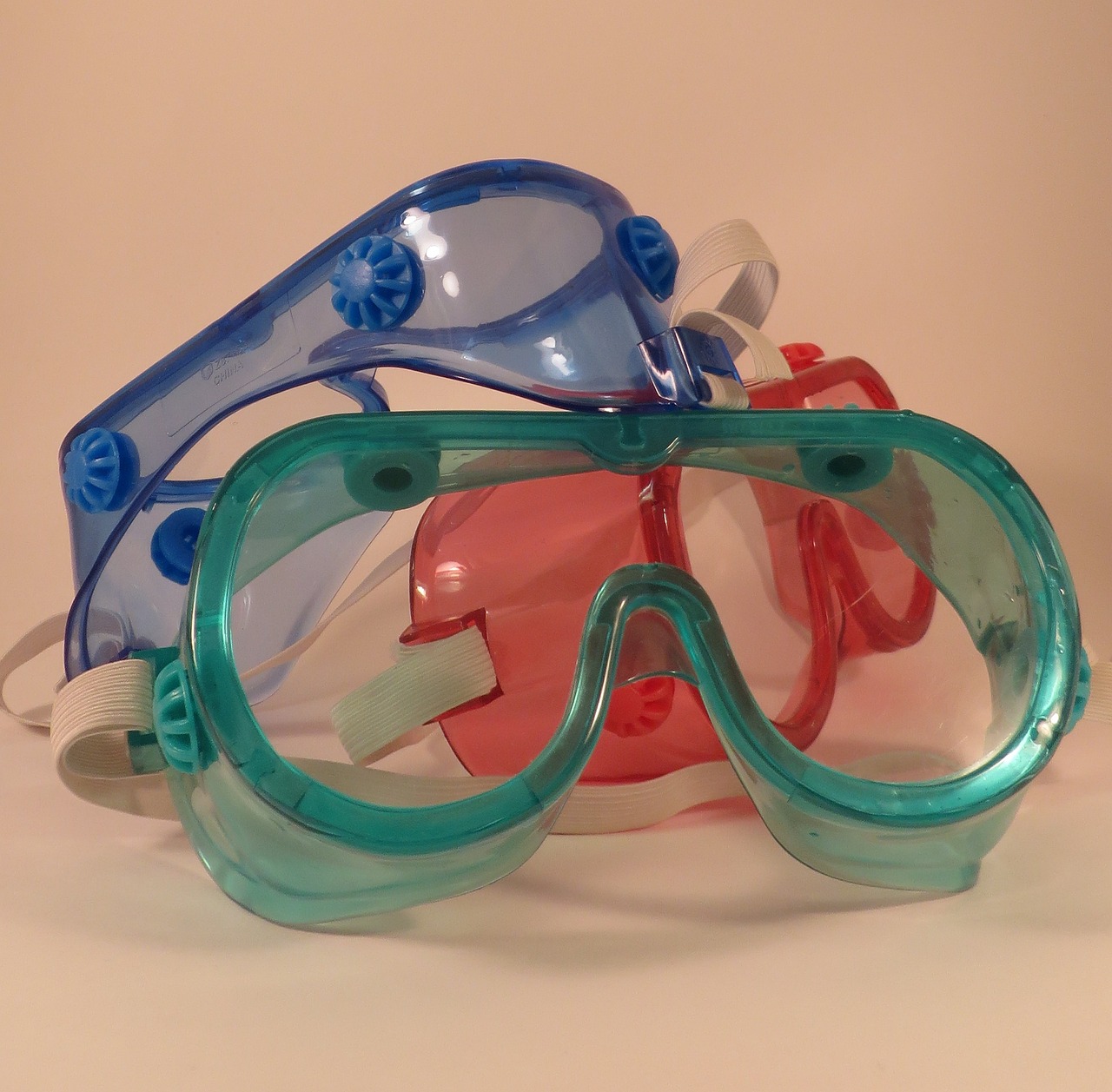
Handling Aggressive Behavior on the Road
Traveling with pets can be a delightful experience, but it can also present challenges, especially when dealing with aggressive behavior. Understanding and managing aggression in pets is crucial for ensuring a safe and enjoyable journey for everyone involved. Aggression can arise from various factors, including fear, anxiety, or territorial instincts. As a responsible pet owner, it’s essential to recognize these triggers and implement strategies to mitigate aggressive reactions.
One of the first steps in handling aggressive behavior is to identify the triggers. Common stimuli that may provoke aggression in pets during travel include:
- Strange noises from the environment, such as honking horns or loud music
- Unexpected encounters with other animals or people
- Changes in routine or environment that may cause stress
By being aware of these potential triggers, you can take proactive steps to minimize their impact. For instance, if your pet tends to react aggressively to other dogs, it might be wise to keep your distance during stops or choose less crowded travel routes.
Preventive measures can significantly reduce the likelihood of aggression. One effective strategy is to engage in behavioral training before your trip. Teaching your pet basic commands such as “sit,” “stay,” and “leave it” can help you maintain control in challenging situations. Additionally, gradually exposing your pet to the travel environment through desensitization techniques can help them adapt better to the sights and sounds of the road.
In some cases, it may also be beneficial to consult with a professional trainer or a veterinarian, especially if your pet has a history of aggressive behavior. They can provide tailored advice and, if necessary, recommend calming products or medications to help your pet cope during travel.
It’s also essential to ensure a safe environment in the vehicle. Using a secure crate or carrier can help prevent your pet from feeling threatened or cornered, which can lead to aggressive behavior. Make sure the travel space is comfortable and familiar to your pet, as this can significantly reduce their anxiety levels.
In summary, handling aggressive behavior in pets while traveling involves a combination of understanding triggers, implementing preventive measures, and creating a safe environment. By taking these steps, you can help ensure a smoother journey for both you and your furry companion.
- What should I do if my pet becomes aggressive during travel?
Remain calm and avoid yelling or punishing your pet. Instead, try to redirect their attention with a toy or treat, and remove them from the stressful situation if possible. - Can training help reduce my pet's aggression?
Absolutely! Training can help your pet learn appropriate behaviors and respond better to stressful situations, reducing the likelihood of aggression. - Are there specific products to help calm an aggressive pet?
Yes, there are various calming products, including pheromone sprays, anxiety wraps, and medications that can help manage your pet's aggression during travel.
Identifying Triggers for Aggression
When traveling with your pet, it's crucial to identify triggers for aggression to ensure a smooth journey for everyone involved. Just like humans, pets can react unpredictably to various stimuli, and recognizing these triggers can help you manage their behavior effectively. Common scenarios that might induce aggression in pets during travel include:
- Strange Environments: New places can be overwhelming. If your pet is suddenly surrounded by unfamiliar sights, sounds, and smells, it may feel threatened and react aggressively.
- Other Animals: Encountering other pets can provoke territorial instincts. Your pet might feel the need to defend its space, leading to aggressive behavior.
- Sudden Movements: Quick movements from passengers, other vehicles, or pedestrians can startle your pet, triggering a fight-or-flight response.
- Noise Levels: Loud noises, such as honking horns or construction sounds, can cause anxiety and lead to aggressive reactions if your pet feels cornered.
Being aware of these triggers is the first step in preventing aggressive behavior. For instance, if your pet tends to get anxious around other animals, you might want to keep your distance during rest stops or use a muzzle if necessary. Additionally, recognizing when your pet is feeling uncomfortable is key. Look for signs such as growling, baring teeth, or stiff body posture. These indicators can signal that your pet is about to react aggressively, allowing you to intervene before the situation escalates.
Moreover, creating a calm environment in your vehicle can significantly reduce stress levels. Consider using calming products, such as pheromone sprays or anxiety wraps, which can help soothe your pet during the journey. Remember, prevention is always better than cure, so by identifying triggers and addressing them proactively, you can help ensure a peaceful travel experience for both you and your furry companion.
Preventive Measures for Aggression
When it comes to traveling with your furry friend, one of the biggest concerns is managing aggressive behavior. Aggression can not only put your pet at risk but also jeopardize the safety of everyone around. Therefore, taking preventive measures is crucial. Start by understanding your pet’s triggers; these can range from loud noises and unfamiliar environments to the presence of other animals. By identifying these stimuli, you can better prepare your pet for the journey ahead.
One effective strategy is to expose your pet gradually to the travel environment. For instance, before hitting the road, take short trips in the car. This helps your pet associate car rides with positive experiences rather than anxiety-inducing ones. Make these outings enjoyable by bringing along their favorite toy or a treat. Over time, this can help diminish their fear and reduce the likelihood of aggressive behavior when it’s time for a longer trip.
Another essential preventive measure is to ensure proper training. Teaching your pet basic commands, such as “sit,” “stay,” and “leave it,” can be invaluable during travel. These commands are not just for show; they can help you regain control in situations where your pet might feel threatened or anxious. For example, if you notice your pet becoming agitated due to a loud noise, a simple command could redirect their focus and calm them down.
Additionally, consider using positive reinforcement techniques. Rewarding your pet for calm behavior during travel can reinforce good habits. Use treats, praise, or toys to encourage them to behave appropriately. This creates a positive feedback loop, where your pet learns that calm behavior leads to rewards, making them less likely to act out aggressively.
Creating a comfortable and familiar environment is also crucial. Bringing along your pet's favorite blanket or bed can provide a sense of security. Familiar scents can have a calming effect, reducing anxiety and the likelihood of aggressive behavior. If your pet feels secure in their space, they are less likely to react negatively to new experiences.
Finally, don’t hesitate to consult a professional trainer or behaviorist if you notice persistent aggression. They can provide tailored strategies and techniques to address your pet's specific needs. Remember, early intervention is key. The sooner you address aggressive tendencies, the smoother your travels will be.
- What should I do if my pet shows signs of aggression while traveling?
If your pet displays aggressive behavior, it’s important to remain calm. Use commands you’ve practiced, and try to redirect their attention. If necessary, find a safe space to give them a break. - How can I tell if my pet is stressed during travel?
Signs of stress can include excessive barking, growling, pacing, or attempts to escape. If you notice these behaviors, it may be time to assess the situation and implement calming techniques. - Are there specific breeds that are more prone to aggression while traveling?
While aggression can occur in any breed, some dogs may be more sensitive to travel stress. It's essential to understand your pet's personality and tailor your approach accordingly. - Can I use medication to help manage my pet’s aggression?
Yes, consult your veterinarian about the possibility of using medications or natural supplements to help manage your pet’s anxiety and aggression during travel.
Frequently Asked Questions
-
What are some common pet behavior issues during travel?
Pets often experience anxiety, aggression, and restlessness while on the road. These behaviors can stem from unfamiliar environments, noise, and the stress of traveling. Understanding these issues can help you prepare better and manage your pet's behavior effectively.
-
How can I prepare my pet for a trip?
Preparation is crucial! Start by acclimating your pet to the travel environment. Take short car rides to help them get used to being in a vehicle. Establishing a comfortable routine, including familiar toys and bedding, can also ease their transition.
-
What should I consider when choosing a crate or carrier?
Select a crate or carrier that is appropriate for your pet's size and comfort. It should be well-ventilated and secure. Introduce your pet to their travel space gradually to help them feel safe and relaxed during the journey.
-
What essential supplies should I bring for my pet?
Make sure to pack the essentials like food, water, bowls, a leash, waste bags, and any medications your pet may need. Don't forget their favorite toys or blankets to create a sense of familiarity on the road!
-
How can I recognize signs of anxiety in my pet?
Common signs of anxiety include excessive barking, panting, restlessness, and attempts to escape. If your pet is displaying these behaviors, it's essential to address their needs promptly to ensure a smoother travel experience.
-
What calming techniques can I use for an anxious pet?
Consider using calming techniques such as playing soothing music, offering treats, or using anxiety-reducing products like pheromone sprays or calming collars. In some cases, consulting your veterinarian about medication may also be beneficial.
-
How can I manage aggressive behavior during travel?
To manage aggression, first identify triggers that may provoke your pet. These could include loud noises or the presence of unfamiliar animals. Training your pet to respond to basic commands can also help in controlling aggressive reactions.
-
What preventive measures can I take to reduce aggression?
Preventive measures include providing a calm environment, using positive reinforcement training, and ensuring your pet is well-exercised before the trip. Making adjustments to your travel plans to minimize stressors can also make a significant difference.




